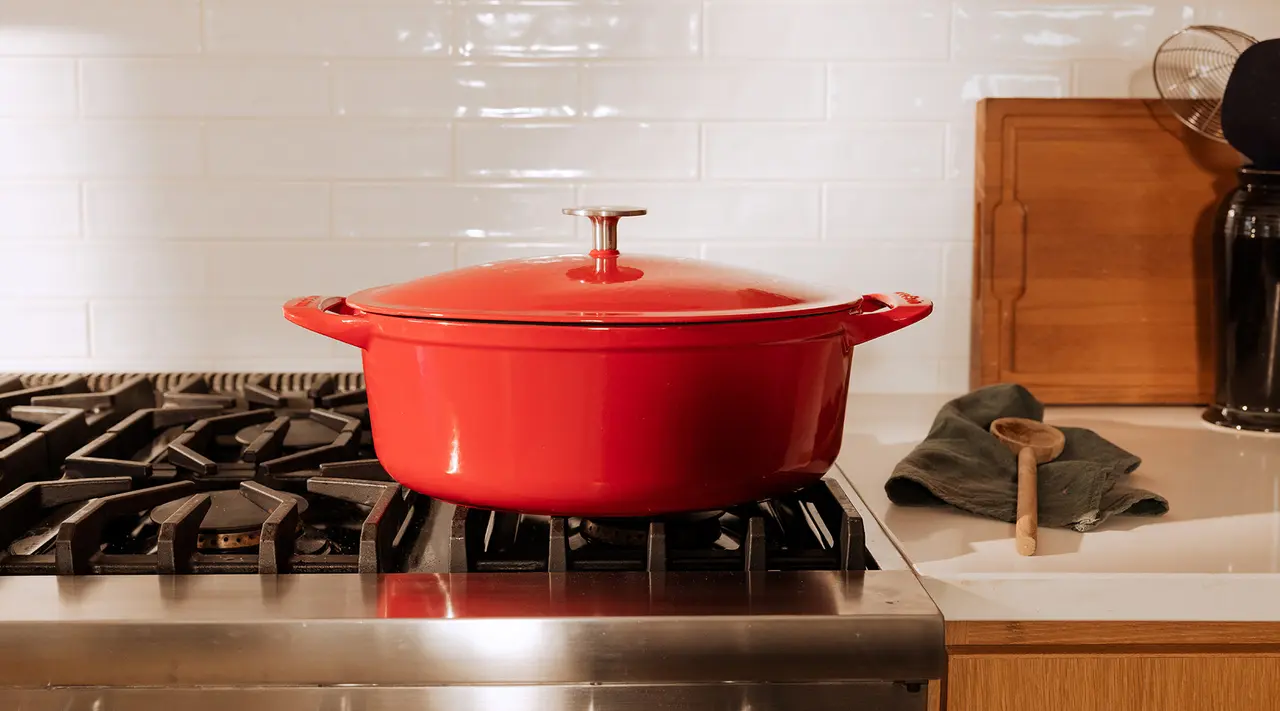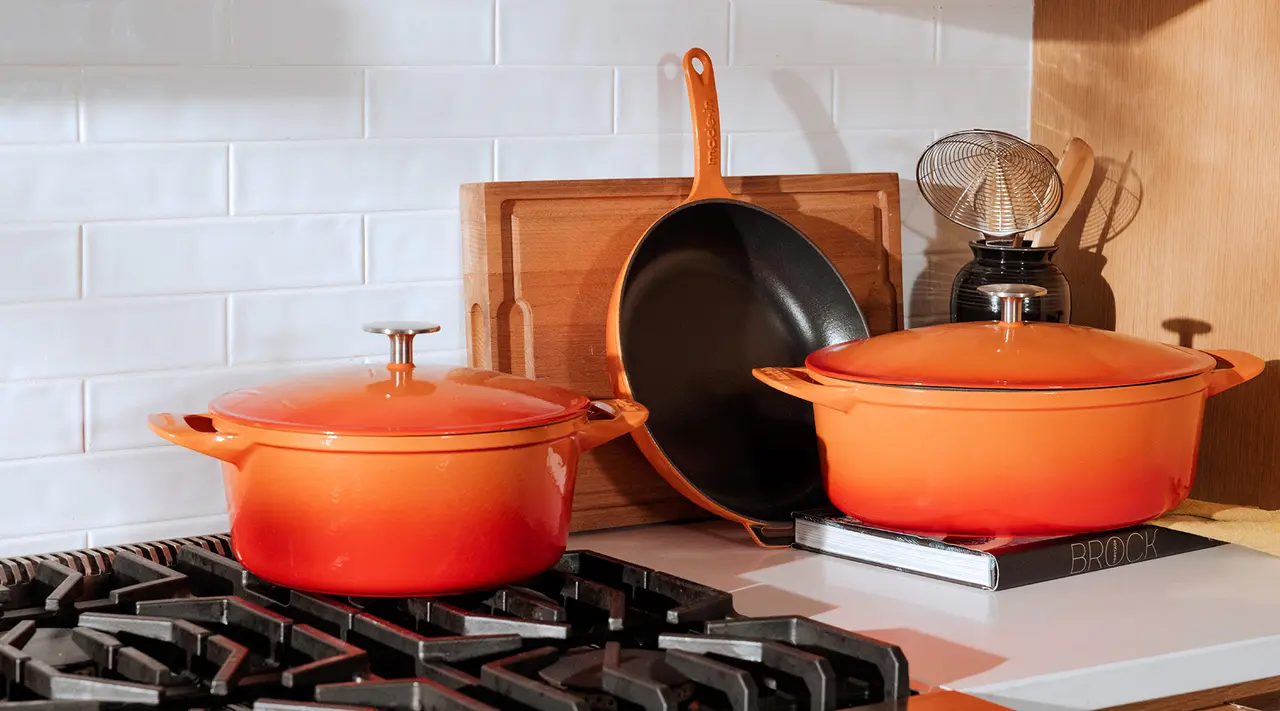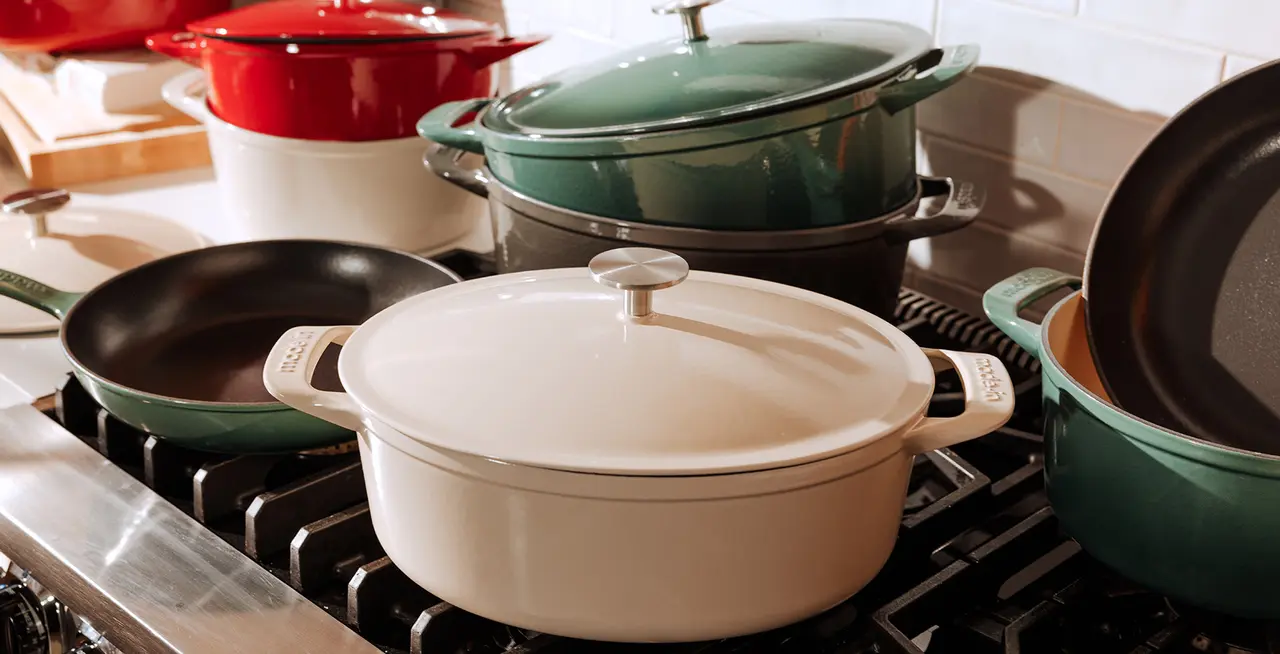So, you’re shopping for a Dutch oven?
A staple in every kitchen, Dutch ovens can last years with the proper care and are renowned for their versatility. While navigating the variety of size and color options available to you, you’re also likely to bump into another factor: Shape.
Dutch ovens are commonly available in both traditional round and slightly less popular Oval versions. Our team put together a guide to the pros and cons of each, so that you can make an informed decision while shopping.
Round Dutch Ovens

Round Dutch ovens are typically the default, and has many varied uses including soups, stews, sauces, and even bread. Known as “the original slow cooker,” the Dutch oven is applauded for its ability to retain and circulate heat evenly over extended cooking times.
Round Dutch ovens range in size from 2 to 13 quarts, but the most commonly used size clocks in at 5.5 quarts and is able to serve five or six people.
Typical Uses
Round Dutch ovens are champions when preparing stovetop meals such as chili, stews, soups, and sauces. Its round shape matches the size of most stovetop burners, allowing round Dutch ovens to heat efficiently. They can also be transferred to the oven for meals that require an oven finish.
Oval Dutch Ovens

Similar to their round counterparts, oval Dutch ovens are adaptable, high-performance, and elegant pieces that retain and circulate heat evenly. They offer more space and cooking surface area, and are available in sizes ranging from just under 3 to over 15 quarts.
The elongated shape of an oval Dutch oven makes it well suited to slow-cooking, braising, roasting, and more, especially for whole poultry and larger cuts of meat. Just like round Dutch ovens, the oval version is compatible both on the stove and in the oven.
Typical Uses
Oval Dutch Ovens are ideal for whole-roasted chicken, duck, and turkey, as well as larger cuts of meat (pork shoulder, lamb shank, and so on) and oblong loaves of bread.
Which Is Better?

The shape of the Dutch oven you purchase should be determined by what you’re planning to cook, how many mouths you regularly feed, and how much storage you have in your kitchen.
While Made In’s Oval Dutch Oven takes longer to heat up on the stove compared to the round variety, its shape better accommodates special occasion-sized cuts of meat and larger quantities of ingredients, so every meal becomes a one-pan affair. Depending on your stove, you’ll want to double check that this larger than average piece of cookware is compatible with your set-up..
Round Dutch ovens, on the other hand, are slightly condensed versions of that same high-performance Enameled Cast Iron. Comparatively, Made In’s Round Dutch Oven heats up faster than the Oval, and is easier to store—though if you’re anything like us, you’ll just end up keeping yours on the stovetop for easy access.
Ready to Shop?
Regardless of their shape, Dutch ovens are an iconic piece to have in the kitchen. Their versatility allows home and professional cooks alike to try new techniques, such as oven finishing, and chef recipes, such as Braised Kale and White Beans or Chicken Posole.























